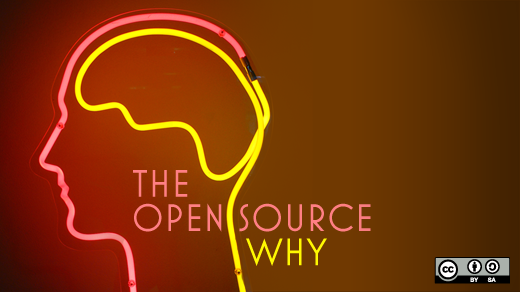This month marks a milestone for me. It's been five years since I started working in—and learning from—an open organization.
But it also marks another important milestone. My organization, the Mozilla Foundation, just finished drafting a strategic plan for what the next five years may hold.
And we created that plan through open collaboration between our staff and community.
Planning in the open is hard work. Working with so many diverse perspectives on such a vast topic has been rewarding but difficult. You need a thick skin and lots of patience. In the months since I read The Open Organization, I've been reflecting on what Jim Whitehurst has to offer from his own strategic planning and change management experiences at Red Hat.
Aligning passion and purpose
In my view, this is one of the most powerful lessons in Jim's book: the importance of aligning your organization's shared purpose or strategy with the individual passions of your team. What excites and motivates people? Where do they most want to learn and grow? People need to see themselves reflected in the plan. Otherwise, it's just words.
"To truly perform at a peak level," Jim writes, "simply defining a purpose is not enough. What sets open organizations apart is that they have also embraced the need to activate the emotional passions of their team to reach that ultimate destination."
Connecting those things, however, can be incredibly messy and difficult—like herding noisy, hyperactive cats. It's especially hard when the feedback you're getting in the planning process seems contradictory. ("Why wasn't I consulted?!" vs. "Why are you bothering me with this?") Some people want radical transparency; others get nervous seeing how the sausage is made.
Planning with a distributed team can also require more work from more people. ("You're asking me to spend so much time on planning, I don't have time to do my actual work!") For leaders and project managers, this can feel like a frustrating Goldilocks problem, where the porridge is always either too hot or too cold.
But my main takeaway is this: Messy, chaotic processes are difficult but essential. Aligning purpose with passion is the only way to get the shared sense of ownership and buy-in you need to make plans actually succeed, rather than just have people pay lip service to them.
Planning in the open may be noisy and chaotic; but the alternative to that noisy chaos is often quiet failure. As Jim points out in his book (and there's plenty of studies and data to support it), plans and change management initiatives written in secret by a cabal often end up just gathering dust on a shelf.
Your organization's shared purpose or strategy is like the compass point or destination. But the passion of individual humans and small teams is what put the wind in the sails and help you actually get you there. Aligning those things takes time. But the hope, as Jim puts it, is that "slower decisions lead to faster results."
Connecting "story of self" to "story of us"
We saw the practical power of this recently at a work week in Orlando, where our entire team gathered to discuss how we'll put our strategy into practice together in 2016. We began with a "story of self" exercise, which involved gathering in small groups in order to each share our personal narratives about what brought us to this work, and why we're passionate about it.
It was a great way to get to know the diverse history of the people we work with, and to let the links between those individual passions emerge organically. If I had to do the entire strategic planning process over again, I think I'd want to start with that exercise, as a way to connect our individual passions to a shared purpose. Armed with the insights from Jim's book, I now have a clearer understanding of why.
Continuous learning and adaptation
Of course, most plans rarely survive their first contact with reality unscathed. Some things you can learn only by building and testing in the real world—not just by designing and planning. Our communities are diverse and complex, and solutions come from surprising places.
As an open organization, we want to be a community that continually learns and adapts. In 2016, we'll look for ways to create ritualized systems for testing, learning, and updating the plan as we go. We'll remain grounded in a "test early and often" and "fail fast" philosophy that sees adapting and updating as a sign of strength, not weakness.
"The power of participative systems and bottom-up innovation," Jim writes, "comes from having those closest to the problems involved in solving them." Like Red Hat, we're discovering that one of our core strengths at the Mozilla Foundation is as a convener and catalyst. Over the past five years, we've learned that we're at our best when we invest directly in people, not just software.
Our hope is that by developing leaders who share our open ethos and philosophy, armed with emerging best practices like the ones Jim outlines in his book, we can help fuel the next wave of open—and hopefully see many more open communities and organizations bloom.






1 Comment